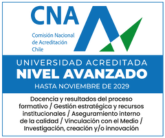The design and engineering of antibacterial materials are key for preventing bacterial adherence and proliferation in biomedical and household instruments. Silver nanoparticles (AgNPs) and chitosan (CHI) are broad-spectrum antibacterial materials with different properties whose combined application is currently under optimization. This study proposes the formation of antibacterial films with AgNPs embedded in carboxymethylcellulose/chitosan multilayers by the layer-by-layer (LbL) method. The films were deposited onto nanoporous silicon (nPSi), an ideal platform for bioengineering applications due to its biocompatibility, biodegradability, and bioresorbability. We focused on two alternative multilayer deposition processes: cyclic dip coating (CDC) and cyclic spin coating (CSC). The physicochemical properties of the films were the subject of microscopic, microstructural, and surface–interface analyses. The antibacterial activity of each film was investigated against Escherichia coli (Gram-negative) and Staphylococcus aureus (Gram-positive) bacteria strains as model microorganisms. According to the findings, the CDC technique produced multilayer films with higher antibacterial activity for both bacteria compared to the CSC method. Bacteria adhesion inhibition was observed from only three cycles. The developed AgNPs–multilayer composite film offers advantageous antibacterial properties for biomedical applications.
Keywords: antibacterial films; carboxymethylcellulose; chitosan; silver nanoparticles; nanoporous silicon; composite material; layer-by-layer



